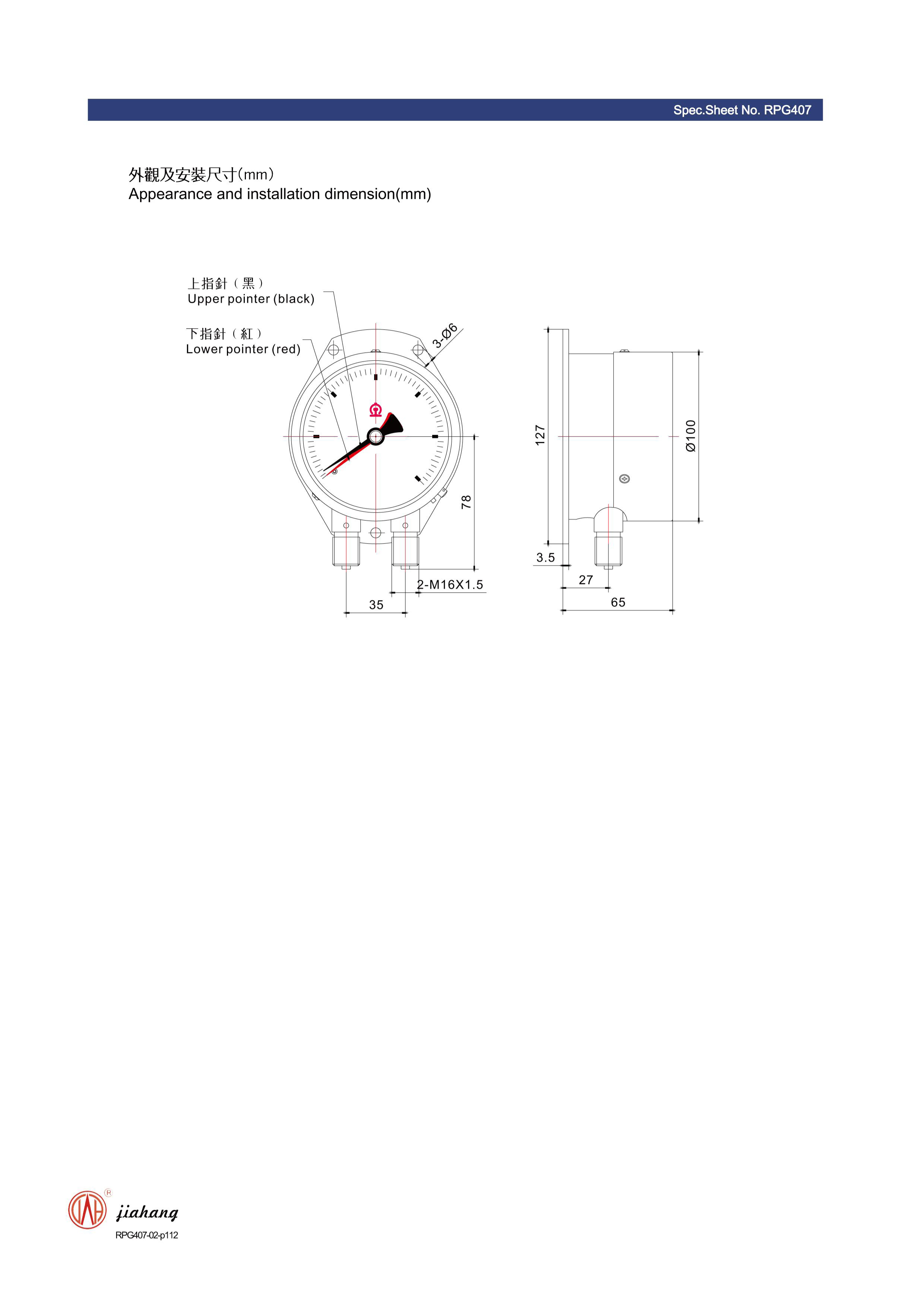
Dec . 15, 2024 07:08 Back to list
Understanding the Key Distinctions Between Differential and Absolute Pressure Gauges
Understanding the Difference Between Differential and Absolute Pressure Gauges
Pressure measurement is crucial in various industries, including manufacturing, food and beverage, pharmaceuticals, and oil and gas. Two common types of pressure gauges used in these sectors are differential pressure gauges and absolute pressure gauges. Understanding the difference between them is essential for selecting the right instrument for specific applications.
Absolute Pressure Gauges
Absolute pressure gauges measure pressure relative to a perfect vacuum. In this context, a vacuum is defined as the absence of any matter, which equates to a pressure of zero. Therefore, an absolute pressure gauge provides a reading that reflects the total atmospheric and gauge pressure combined. This type of gauge is crucial in applications where vacuum conditions are prevalent or where changes in atmospheric pressure could impact the measurement.
One of the key advantages of absolute pressure gauges is their reliability and accuracy. Since they are referenced against a vacuum, they deliver consistent results that are unaffected by changes in local atmospheric pressure. This is particularly vital in scientific research, aerospace applications, and any scenario where precise pressure measurements are required, including high-altitude environments.
Differential Pressure Gauges
Differential pressure gauges, on the other hand, measure the difference in pressure between two points. These can be two different stages within a system, or they might compare the pressure inside a vessel to the ambient atmospheric pressure. The differential pressure gauge provides vital information about the flow rates in pipes, filter conditions, and various other applications.
One common use of differential pressure gauges is in HVAC systems to monitor air flow and filter conditions. By measuring the pressure drop across an air filter, maintenance teams can determine when a filter needs replacing. Similarly, in a process industry, differential pressure measurements are crucial for maintaining the efficiency of various systems, as they often indicate how well a process is functioning.
difference between differential and absolute pressure gauges factory

Key Differences
The primary distinction between differential and absolute pressure gauges lies in how they reference pressure. Absolute pressure gauges measure against a vacuum, providing a complete view of the pressure state relative to zero pressure. In contrast, differential pressure gauges rely on two reference points, allowing operators to assess changes and differences in pressure that might indicate process performance or a need for maintenance.
Another important consideration is the range of applications. Absolute pressure gauges are often used in vacuum applications, altimetry, and any precision-required manufacturing processes. Differential pressure gauges excel in situations where it’s crucial to understand the interaction of two pressure points, such as in fluid dynamics, filtration monitoring, and process control systems.
Selection Criteria
When selecting a pressure gauge, one must consider the specific requirements of the application. If precise measurement in relation to vacuum is paramount, an absolute pressure gauge is the appropriate choice. For applications that demand the knowledge of how two pressures compare with each other — such as monitoring flow or system integrity — a differential pressure gauge is more suitable.
In industrial environments, understanding the operating conditions and how they affect pressure readings is vital. Factors such as temperature fluctuations, fluid properties, and potential pressure variations must be accounted for in the selection process.
Conclusion
Both differential and absolute pressure gauges play critical roles in monitoring and controlling systems across multiple industries. Their functionalities, applications, and advantages differ significantly, and understanding these differences will allow engineers and technicians to implement the most effective pressure measurement solutions for their unique requirements. By comprehensively grasping the characteristics of each type of gauge, professionals can enhance operational efficiency, ensure safety, and maintain product quality in their processes.
-
Bourdon-Type Differential Pressure Gauges High Accuracy & Affordable Pricing
NewsMay.22,2025
-
Vacuum Differential Pressure Gauges High-Precision Solutions & Quotes
NewsMay.22,2025
-
Durable Diaphragm Pressure Elements High Accuracy & Custom Quotes
NewsMay.22,2025
-
AG Precision Pressure Gauges High Accuracy & Global Exporters
NewsMay.21,2025
-
Ashcroft Diaphragm Pressure Gauges Precision & Durability
NewsMay.21,2025
-
Micro Differential Pressure Gauges High-Precision & Compact Solutions
NewsMay.20,2025
